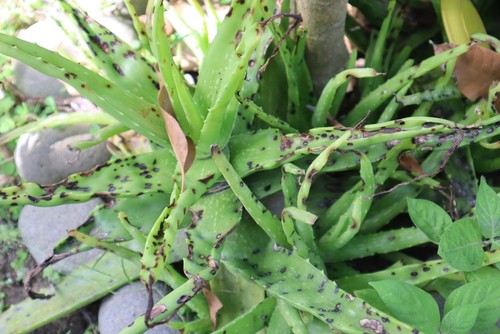Aloe vera plants are a popular choice for indoor gardeners, thanks to their low-maintenance nature and numerous health benefits.
However, sometimes aloe plant have black spots on their leaves, which can be concerning for plant owners. In this article, we will explore the common causes of black spots on aloe vera plants and how to prevent and treat them.
Identifying black spots on aloe vera plants is relatively easy, as they are visible on the leaves. These spots can range in size and color, from small brown spots to larger black ones.
In some cases, the spots may be accompanied by other symptoms, such as wilting or yellowing leaves. If left untreated, black spots can spread and eventually kill the plant.
There are several reasons why aloe vera plants may develop black spots, including fungal or bacterial infections, overwatering, and insect infestations. Understanding the cause of the spots is crucial in determining the appropriate treatment.
With proper care and attention, it is possible to prevent and treat black spots on aloe vera plants, ensuring that they remain healthy and vibrant.
Key Takeaways
- Black spots on aloe vera plants are a common issue that can be caused by fungal or bacterial infections, overwatering, or insect infestations.
- Identifying the cause of the black spots is essential in determining the appropriate treatment.
- Preventing black spots on aloe vera plants involves proper watering, adequate sunlight, and regular cleaning to remove pests and debris.
Check out these other top posts in this category:
- Why Do Some Plants Grow Faster Than Others?
- Why Do Plants Have Two Photosystems Quizlet?
- How Cold Can a Snake Plant Survive?
Identifying Black Spots on Aloe Vera Plants
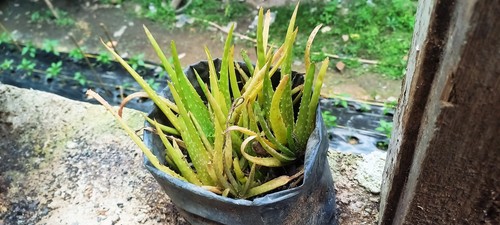
Aloe vera plants are known for their cheery green color and thick, lance-like leaves. However, if you notice black spots on your aloe plant, it may be a sign of an underlying issue. Identifying these black spots is the first step in determining the cause and finding a solution.
Black spots on aloe vera plants can appear on both the leaves and stem. These spots can vary in size and shape, and may appear as small dots or larger patches. In some cases, the black spots may be accompanied by yellowing or browning of the affected area.
One common cause of black spots on aloe vera plants is overwatering. When aloe plants are given too much water, the roots can become waterlogged and begin to rot. This can lead to black spots on the leaves and stem, as well as a general decline in the plant’s health.
Another possible cause of black spots on aloe vera plants is a fungal or bacterial infection. These infections can be caused by a variety of factors, including poor soil drainage, high humidity, and insect infestations. In some cases, the black spots may be accompanied by a foul odor or a slimy texture.
If you notice black spots on your aloe vera plant, it is important to take action quickly to prevent further damage. This may involve adjusting your watering schedule, improving soil drainage, or treating the plant with fungicides or insecticides.
By identifying the cause of the black spots and taking appropriate steps to address the issue, you can help your aloe vera plant recover and thrive.
Why Your Aloe Plant Have Black Spots – 4 Common Problems
Aloe plants are generally easy to care for, but they can develop black spots on their leaves for a variety of reasons. These spots can be a sign of an underlying problem that needs to be addressed to keep the plant healthy. In this section, we will explore the most common causes of black spots on aloe plants.
1. Overwatering and Root Rot
Overwatering is a common cause of black spots on aloe plants. When the soil is constantly wet, the roots can become waterlogged and begin to rot. This can cause the plant to develop black spots on its leaves, and if left untreated, it can eventually lead to the death of the plant.
To prevent overwatering, it is important to allow the soil to dry out between waterings. A good rule of thumb is to water the plant when the top inch of soil is dry to the touch. It is also important to make sure the pot has good drainage and to avoid letting the plant sit in standing water.
2. Fungal and Bacterial Diseases
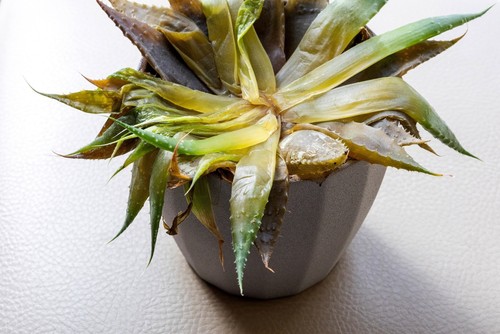
Fungal and bacterial diseases can also cause black spots on aloe plants. These diseases can be caused by a variety of factors, including poor air circulation, high humidity, and contaminated soil or water.
To prevent fungal and bacterial diseases, it is important to keep the plant in a well-ventilated area and to avoid overwatering. If the plant does develop a fungal or bacterial infection, it may be necessary to treat it with a fungicide or bactericide.
3. Sunburn and Temperature Issues
Aloe plants can also develop black spots if they are exposed to too much direct sunlight or if they are exposed to extreme temperatures. Sunburn can cause the leaves to turn black and dry out, while cold temperatures can cause the leaves to become discolored and mushy.
To prevent sunburn, it is important to keep the plant in a shaded area or to provide it with some form of protection from the sun. If the plant is exposed to cold temperatures, it may be necessary to move it to a warmer location or to provide it with some form of insulation.
4. Pests and Bugs
Mealybugs, aphids, and other white bugs can also cause black spots on aloe plants. These insects feed on the sap of the plant, which can cause the leaves to turn black and wilt.
To prevent infestations, it is important to keep the plant in a clean and well-maintained area. If the plant does become infested, it may be necessary to treat it with an insecticide or to manually remove the insects with a cotton swab dipped in rubbing alcohol.
How to Prevent Black Spots
Black spots on aloe plants can be prevented by taking proper care of the plant and ensuring that it is in a healthy growing environment. Here are some tips to prevent black spots from appearing on your aloe plant:
1. Proper Watering
Overwatering is one of the main causes of black spots on aloe plants. It is important to water your aloe plant only when the soil is dry to the touch.
Aloe plants prefer well-draining soil, so make sure that the container has proper drainage holes to prevent water from accumulating. It is also important to avoid getting water on the leaves as this can cause them to rot.
2. Temperature and Light Control
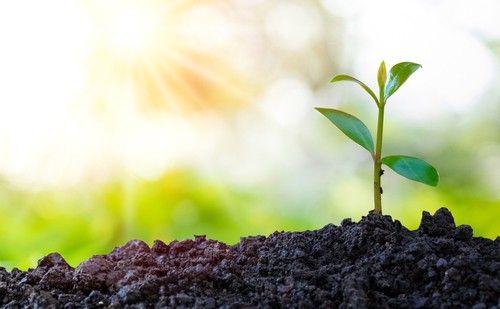
Aloe plants thrive in temperatures between 60-75°F (15-24°C) and prefer bright, indirect sunlight. If the plant is exposed to direct sunlight, it can lead to scorching or sunburn damage to the leaves.
Similarly, if the plant is exposed to low light conditions, it can cause the plant to become weak and susceptible to diseases. If the plant is grown indoors, it is best to place it near a window that receives sufficient light or use artificial lights.
3. Preventing Pests and Diseases
Aloe plants can be susceptible to pests such as mealybugs, spider mites, and scale insects. It is important to inspect the plant regularly for any signs of infestation and take appropriate measures to prevent them. Insecticidal soaps can be used to eliminate pests.
Diseases such as leaf spot can also cause black spots on aloe plants. To prevent diseases, it is important to maintain a clean growing environment and avoid overcrowding the plants. If a plant is infected, it should be isolated and treated promptly to prevent the spread of the disease.
In addition to the above tips, it is also important to maintain proper humidity levels, especially during the winter months when the air is dry.
Transparent curtains can be used to insulate the plant from cold drafts, and perlite can be added to the soil to improve drainage. Frost cloths can also be used to protect the plant from extreme cold temperatures.
By following these tips, you can ensure that your aloe plant remains healthy and free from black spots.
Treatment for Black Spots on Aloe Vera
Black spots on an Aloe Vera plant can be a sign of overwatering, fungal or bacterial diseases, or pest infestation. Once the cause of the black spots is identified, the appropriate treatment can be applied to save the plant.
1. Repotting the Aloe Vera Plant
If overwatering is the cause of the black spots, repotting the plant can help. First, gently remove the plant from its pot and remove any wet soil or roots. Then, repot the plant in a pot with well-draining soil and let it dry out before watering again. This will prevent the roots from rotting and allow the plant to recover.
2. Fungal and Bacterial Treatment
If the black spots are caused by fungal or bacterial diseases, the plant can be treated with an anti-fungal application or an antibacterial spray. Alternaria alternata is a common fungus that causes black spots on Aloe Vera plants.
To treat this fungus, remove the affected leaves and apply a fungicide to the plant. Other bacterial diseases can be treated with an antibacterial spray.
3. Pest Control
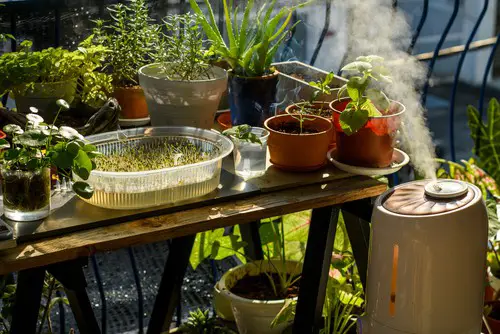
If sap-sucking bugs are the cause of the black spots, the plant can be treated with rubbing alcohol or insecticidal soap. These products can be applied directly to the affected leaves to kill the bugs and prevent further damage. It is important to identify the type of pest infestation before applying any treatment.
In addition to these treatments, it is important to prevent pathogen growth by maintaining a temperature of 55⁰F -80⁰F. Extreme humid environments can also cause black spots on Aloe Vera plants, so it is important to maintain a relative humidity of 40%.
By following these tips, black spots on Aloe Vera plants can be treated and prevented, allowing the plant to thrive.
Special Considerations for Indoor Aloe Vera Plants
Indoor aloe vera plants require special considerations to thrive. They need bright, indirect light to grow, making them ideal for sunny windowsills or under grow lights. However, direct sunlight can scorch the leaves, so it is important to protect them from harsh rays.
Good drainage is essential for indoor aloe vera plants. They prefer soil that is well-draining and slightly acidic. Overwatering can lead to root rot and other issues, so it is important to water the plant only when the soil is completely dry.
Indoor environments can be dry, which is not ideal for aloe vera plants. They thrive in humid environments, and a lack of humidity can lead to brown or black spots on the leaves. Using a humidifier or placing a tray of water near the plant can help increase the humidity around the plant.
Aloe vera plants are also susceptible to fungal and bacterial diseases, which can cause black spots on the leaves. It is important to keep the plant in a well-ventilated area to prevent the buildup of moisture, which can lead to the growth of harmful microorganisms.
Frequently Asked Questions

How do I treat black spots on my aloe plant?
To treat black spots on an aloe plant, the first step is to identify the cause of the issue. In most cases, black spots are caused by overwatering, leaf spot diseases, or fungal and bacterial infections.
The best way to treat black spots is to remove the affected leaves and adjust the watering schedule. If the problem persists, consider using a fungicide or an insecticide.
What causes black spots on aloe plants?
Black spots on aloe plants can be caused by a variety of factors, including overwatering, leaf spot diseases, fungal and bacterial infections, scorching sun, and sap-sucking bugs like mealybugs and aphids.
Insects secreting honeydew, a sugary substance, are the most common culprits. These insects draw in others, such as ants, which feast on the honeydew. The feasting process damages the plant, eventually resulting in black spots.
How can I get rid of fungus on my aloe vera plant?
To get rid of fungus on an aloe vera plant, use a fungicide that is specifically formulated for succulents. In addition to using a fungicide, adjust the watering schedule and remove affected leaves.
To prevent the fungus from spreading, make sure to keep the plant in a well-ventilated area with good air circulation.
What is a good fungicide for treating aloe vera leaf spot disease?
A good fungicide for treating aloe vera leaf spot disease is one that is specifically formulated for succulents. Look for products that contain copper or sulfur, as these are effective in treating fungal infections.
Make sure to follow the instructions on the label carefully and wear protective gear when applying the fungicide.
Why do aloe plants develop brown spots?
Aloe plants can develop brown spots due to a variety of factors, including overwatering, underwatering, leaf spot diseases, fungal and bacterial infections, scorching sun, and sap-sucking bugs like mealybugs and aphids.
The best way to prevent brown spots is to ensure that the plant is receiving the correct amount of water and sunlight, and to keep it in a well-ventilated area with good air circulation.
What are the white spots on my aloe plant?
White spots on an aloe plant may be caused by mealybugs or scale insects. These insects secrete a waxy substance that covers their bodies and protects them from predators.
The waxy substance can appear as white spots on the leaves of the plant. To get rid of mealybugs or scale insects, use an insecticide that is specifically formulated for succulents and follow the instructions on the label carefully.

Hey, I’m Lisa and I’ve been an avid gardener for over 30 years. I love writing, talking and living in the garden! Feel free to connect with me on my socials below

